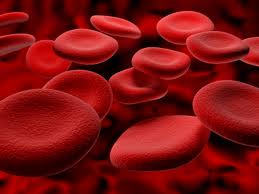1. The mostcommon brain tumorsare cancers from other parts of the body (e.g. lung, breast, colon or prostate) that spreads to the brain.
2. Primary brain tumors originate in the brain and there are over 126 such tumors listed by WHO.
3.Glioma is the commonest primary brain tumour and originates from supporting brain cells that are called glial cells and 50% of all brain tumors begin as benign tumors.
4. Another brain tumour called ‘Astrocytomas’ are so named because their cells look like stars ; the word ‘astro’ in Latin means "star".
5. A primary brain tumour usually is restricted to brain and does not spread to other organs. If brain death occurs in these patients,it is possible to donate their organs.
6. In most instances the cause of brain tumor is not known and they do not discriminate among gender, class or ethnicity.
7. Each year approximately200,000 people in the United Statesare diagnosed with metastatic or primary brain tumor.
8. Commonsymptomsof a brain tumor include headaches, seizures, personality changes, eye weakness, nausea or vomiting, speech disturbances, memory loss.
9. The survival from brain tumor at five years is approximately 30%.
10. Brain tumors can be treated by surgery, radiation therapy, stereotactic
radiotherapy, chemotherapy or by using these in combination. The most important issue when treating these patients, besides trying to cure them, is to ensure that the quality of life is not compromised.
- Brain cancer is the leading cause of cancer deaths worldwide. Regrettably, the exact cause of brain cancer is unknown.
- Brain cancer is popularly referred to as brain tumour. Brain tumours are cancerous cells from other parts of the body (e.g. lung, breast, stomach etc.) that spread to the brain.
- WHO has listed around 126 primary brain cancers that develop in the brain. According to the American Brain Tumour Association, around 3,59,000 people in the US live with primary brain cancer.
- Common symptoms of all forms of brain cancer include headaches, seizures, personality changes, eye weakness, nausea or vomiting, anxiety, speech disturbances, memory loss etc.
- Males have higher risk of developing brain cancer than females, but glioma, the commonest primary brain cancer, occurs more in women than men.
- Europeans have elevated chances of developing brain cancer compared with people of other ethnicities.
- A primary brain cancer limits itself to brain and does not spread to other organs. A patient, who dies because of primary brain cancer, can possibly donate his or her organs.
- Glioblastoma, meningioma and oligodendroglioma are different types of brain cancer that are often found in adults. Oligodendroglioma have cells shaped like fried eggs. Another type of brain cancer called ‘Astrocytomas’ has cells that look like stars.
- Metastatic brain cancer (that spreads from other parts of the body to the brain) is the most common type of brain cancer.
- Brain cancer is not common among young people. Middle-aged people or people aged 65 have the risk of developing brain cancer.
- Your cell phone emits radioactive waves, which is a potential cause of brain cancer.
- According to the American Brain Tumour Association, all types of brain cancers are treatable, if caught early. There are around 130 types of brain cancer and therefore, are difficult to diagnose.
- Standard treatment of brain cancer includes chemotherapy, radiation therapy and brain surgery.





+-+Copy.jpg)
+-+Copy.jpg)






.jpg)

